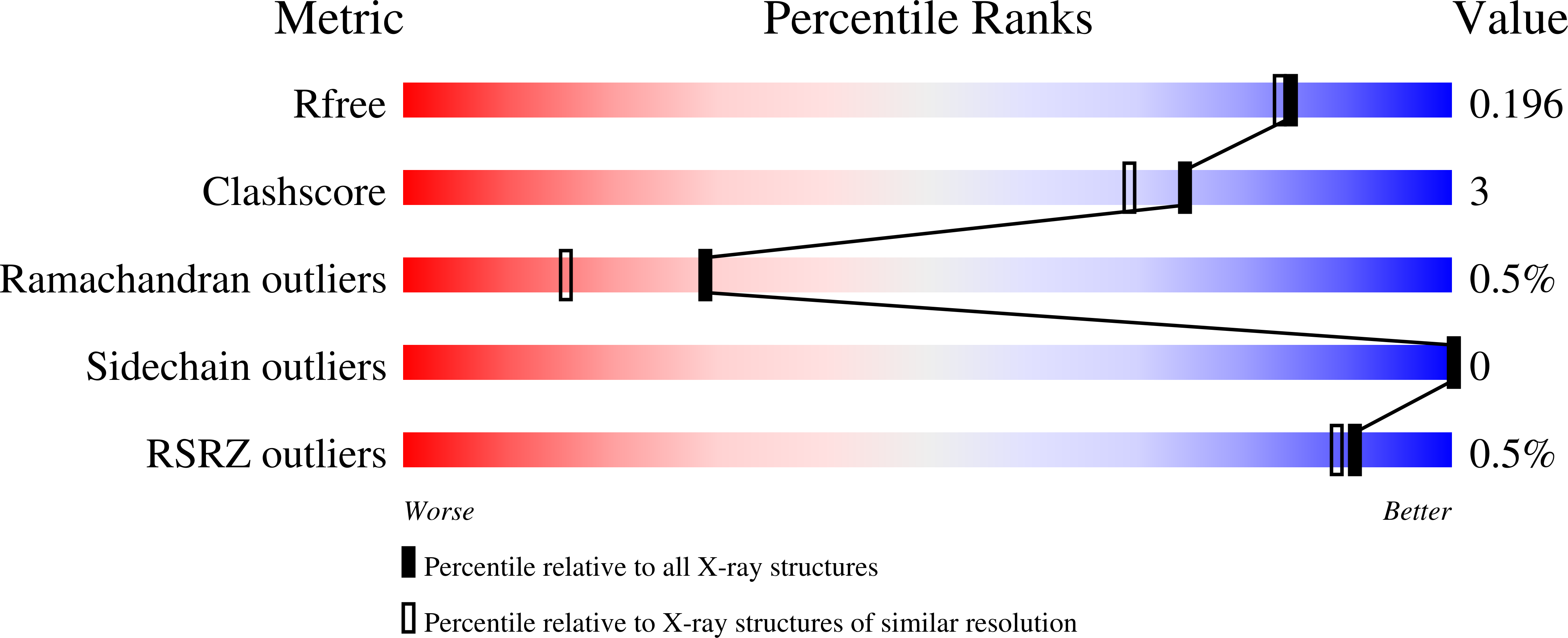The Crystal Structure of Necrosis- and Ethylene-Inducing Protein 2 from the Causal Agent of Cacao's Witches' Broom Disease Reveals Key Elements for Its Activity.
Zaparoli, G., Barsottini, M.R., de Oliveira, J.F., Dyszy, F., Teixeira, P.J., Barau, J.G., Garcia, O., Costa-Filho, A.J., Ambrosio, A.L., Pereira, G.A., Dias, S.M.(2011) Biochemistry 50: 9901-9910
- PubMed: 21999603
- DOI: https://doi.org/10.1021/bi201253b
- Primary Citation of Related Structures:
3ST1 - PubMed Abstract:
The necrosis- and ethylene-inducing peptide 1 (NEP1)-like proteins (NLPs) are proteins secreted from bacteria, fungi and oomycetes, triggering immune responses and cell death in dicotyledonous plants. Genomic-scale studies of Moniliophthora perniciosa, the fungus that causes the Witches' Broom disease in cacao, which is a serious economic concern for South and Central American crops, have identified five members of this family (termed MpNEP1-5). Here, we show by RNA-seq that MpNEP2 is virtually the only NLP expressed during the fungus infection. The quantitative real-time polymerase chain reaction results revealed that MpNEP2 has an expression pattern that positively correlates with the necrotic symptoms, with MpNEP2 reaching its highest level of expression at the advanced necrotic stage. To improve our understanding of MpNEP2's molecular mechanism of action, we determined the crystallographic structure of MpNEP2 at 1.8 Å resolution, unveiling some key structural features. The implications of a cation coordination found in the crystal structure were explored, and we show that MpNEP2, in contrast to another previously described member of the NLP family, NLP(Pya) from Pythium aphanidermatum, does not depend on an ion to accomplish its necrosis- and electrolyte leakage-promoting activities. Results of site-directed mutagenesis experiments confirmed the importance of a negatively charged cavity and an unforeseen hydrophobic β-hairpin loop for MpNEP2 activity, thus offering a platform for compound design with implications for disease control. Electron paramagnetic resonance and fluorescence assays with MpNEP2 performed in the presence of lipid vesicles of different compositions showed no sign of interaction between the protein and the lipids, implying that MpNEP2 likely requires other anchoring elements from the membrane to promote cytolysis or send death signals.
Organizational Affiliation:
Departamento de Genética e Evolução, IB/UNICAMP, CP 6109, 13083-970 Campinas, SP, Brazil.
















